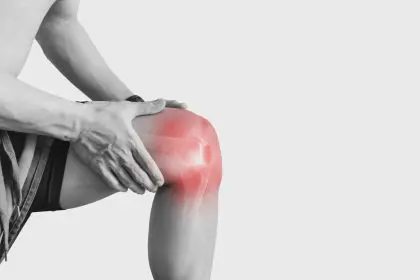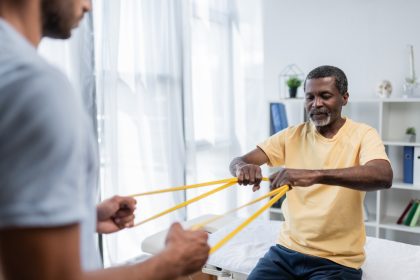The human body wasn’t designed for modern life. Extended sitting, repetitive movements, and technology use create physical imbalances that accumulate over time, eventually manifesting as pain and injury. Morning represents a critical window for counteracting these patterns before daily stresses compound them. By incorporating strategic movement sequences that address common vulnerability points, you can significantly reduce injury risk while simultaneously enhancing energy and performance throughout the day.
The five-minute spine sequence prevents back pain
Back pain affects approximately 80% of adults at some point in their lives, with morning stiffness often triggering episodes. A focused spine mobility sequence performed before rising completely from bed can prepare vulnerable spinal structures for the day’s demands.
Begin lying on your back with knees bent and feet flat on the mattress. Gently rock your knees from side to side without forcing, allowing your lower back to release gradually. Progress to gentle knee-to-chest stretches, holding each knee for 30 seconds while maintaining a neutral spine position. Finally, move to hands and knees for cat-cow movements, alternating between rounding and arching your back while breathing deeply into the movement.
This sequence addresses the three primary spinal movement planes, rotation, flexion, and extension, preparing intervertebral discs for load-bearing activities. Morning represents the optimal time for these movements because discs naturally absorb fluid during overnight rest, making them more responsive to gentle mobilization before daily compression occurs.
Joint circulation routine reduces stiffness risks
Overnight immobility reduces synovial fluid circulation within major joints, creating the stiffness many experience upon waking. This temporarily restricted range of motion significantly increases injury risk during early morning activities when tissue pliability remains compromised.
Standing beside your bed, begin with gentle arm circles, making 10 rotations forward and backward while gradually increasing the circle size. Progress to slow neck rotations, shoulder shrugs, and wrist circles to address upper body joints. For lower body preparation, perform ankle circles while balancing on one leg, gentle knee bends focusing on smooth movement rather than depth, and controlled hip rotations with hands placed on hips.
This comprehensive joint sequence requires just three minutes but dramatically improves tissue readiness for subsequent activities. The key lies in moving each joint through its full available range without forcing or bouncing, allowing synovial fluid to redistribute throughout joint surfaces and reduce friction that leads to wear patterns.
Targeted release technique addresses accumulated tension
Modern postures, particularly those associated with desk work, driving, and device use, create predictable tension patterns that accumulate over time. These restrictions gradually alter movement mechanics, setting the stage for compensatory injuries in connected body regions.
Using a foam roller, tennis ball, or your own hands, spend two minutes addressing your personal “hot spots”, typically including the bottoms of feet, calf muscles, hip flexors, mid-back, and base of the skull. Apply gentle, sustained pressure rather than aggressive force, holding each spot for 15-20 seconds while breathing deeply.
This approach works through neurological mechanisms rather than physically breaking adhesions, essentially “resetting” nervous system tension that maintains chronic tightness. Morning proves particularly effective for this work as stress hormones reach their lowest natural levels, allowing deeper release than typically possible later in the day when alertness hormones dominate.
Neural activation wakes up protective reflexes
Modern life dramatically under-stimulates the nervous system’s position-sensing mechanisms, essentially dulling the body’s built-in injury prevention systems. A brief morning sequence focusing on balance and coordination reawakens these protective reflexes before exposure to environmental hazards.
Stand on one leg while performing small head rotations, maintaining balance for 20-30 seconds before switching sides. Progress to marching in place while moving your eyes in different directions without losing rhythm. Finally, perform cross-body movements like touching your right hand to your left knee, then alternating sides while maintaining a gentle bounce.
These seemingly simple activities recalibrate proprioceptive systems that protect against falls and missteps throughout the day. Morning activation proves particularly important because sleep temporarily disrupts some coordination pathways, leaving many people vulnerable during their first hour awake when accident rates peak in household settings.
Breathing reset addresses stress-induced vulnerability
Chronic stress creates predictable breathing alterations that significantly impact injury susceptibility. Upper chest breathing patterns triggered by stress hormones increase tension in neck, shoulder, and upper back muscles while reducing core stability essential for spine protection.
Sitting comfortably, place one hand on your chest and one on your abdomen. Take 10 slow breaths, focusing on initiating each breath from your lower abdomen while minimizing upper chest movement. Progress to “box breathing”, inhaling for four counts, holding for four, exhaling for four, and holding for four before repeating the cycle five times.
This brief practice reestablishes optimal breathing mechanics that maintain appropriate muscle tension balances throughout the day. Morning implementation proves crucial because it sets a physiological pattern that the body tends to return to during stressful situations, essentially creating a protective “default setting” for your nervous system.
The cumulative benefit of these five morning routines extends far beyond immediate injury prevention. Regular practitioners report improved energy levels, reduced pain patterns, enhanced mental focus, and greater resilience against both physical and psychological stressors. The entire sequence requires less than 15 minutes but creates protective effects lasting throughout the day.
Implementation proves most successful when integrated into existing morning rituals rather than approached as a separate exercise session. Many practitioners incorporate these movements into their regular routine, performing spine mobility before leaving bed, joint circulation while waiting for coffee to brew, targeted release during a morning shower, neural activation while brushing teeth, and breathing reset before leaving home.
While high-intensity exercise delivers different benefits, these gentle morning practices establish the movement foundation that makes all other physical activity safer and more effective. For those managing existing injuries, these sequences provide an accessible entry point that gradually rebuilds confidence while addressing underlying movement limitations that perpetuate pain cycles.
The most significant impact emerges not from occasional high-intensity implementation but from consistent, moderate engagement with these principles. Even performing just one or two sequences daily delivers measurable benefits, making this approach accessible regardless of time constraints or fitness level. By prioritizing these protective morning movements, you transform daily habits from potential injury triggers into opportunities for progressive physical resilience.

















